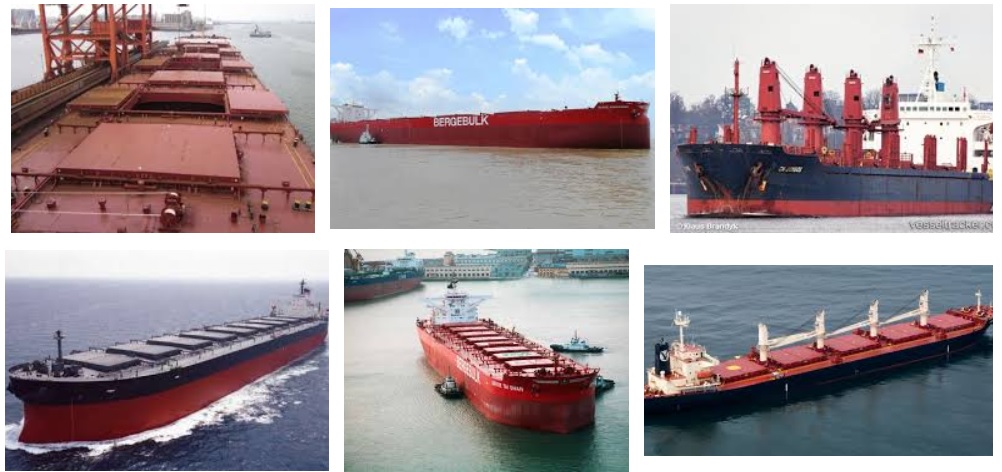In case large amounts of water should penetrate the ship’s hatch covers, both ship and crew could be in danger but limited water ingress would normally not cause a safety problem for the ship.
However, from a cargo quality point of view, even small amounts of water can ruin a cargo
and cause commercial havoc. In general, one can say that the Class and statutory rules and associated inspections will mainly look to the safety of the vessel and crew. The industry (charterers, shippers, receivers, underwriters,…) will take statutory and class compliance for granted and will focus more on the commercial aspects of carrying goods by sea.
Whilst decades ago, only a few types of hatch covers were made, a wide variety of hatch covers were being developed to accommodate the requirements of specific ships, trades and cargoes. Nowadays, the most commonly seen types of hatch covers for general cargo ships, handysize, panamax and capesize bulk carriers consist of folding hatch covers (general cargo & handysize) and side rolling hatch covers (panamax & capesize). For container vessels we generally see that lift-away type pontoons are installed.
Ultimately it will be the shipowner who will decide, in concertation and dialogue with the shipyard, classification society, fl ag administration, customers,… which hatch cover type will suit the client’s business model best and eventually hatch covers that are right for the ship, trade and cargo will be developed around a number of key parameters. Items that may influence the design are amongst others size of hatches, carriage of deck cargoes, strength requirements, available crew for preparing hatches to go to sea, opening/closing methods.

Hatch cover designs have evolved from very basic and relatively lightweight designs to huge, heavy and moving pieces of equipment. Hatch covers are generally referred to as heavy-duty shipboard equipment and this is generally associated with material that can withstand rough handling and does not need constant care and maintenance. However, this is not true as modern hatch covers are high-tech equipment for which very small tolerances should be observed. Their maintenance is type-specific and their operation should be considered a risk. Therefore, having a good understanding of how hatch covers work, and how to maintain and operate them is very important.
Cargo should not only be carried and delivered in time and in good condition but should also be transported in an environmentally friendly manner. In view of the size and weight of
hatch covers, many types are still operated by hydraulic systems which, in case of failure
and associated spillage, have a pollution potential.
Only the combination of proper inspection, correct operation and regular maintenance of hatch covers will ensure that the goods loaded onboard ships can be transported in line with good industry standards.
Below you can download a Guide paper from the Japan P&I club, providing very useful information for Owners, Managers and Crew onboard Bulker vessels, discussing important aspects of Bulk Carrier Hatch Covers maintenance and claims:
Source: Japan P&I club






